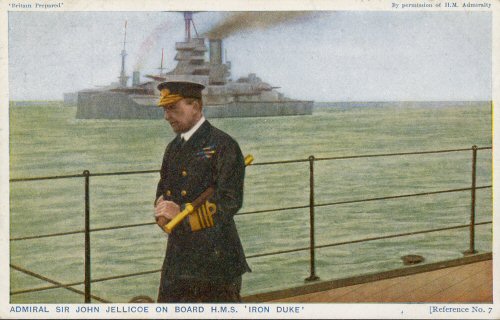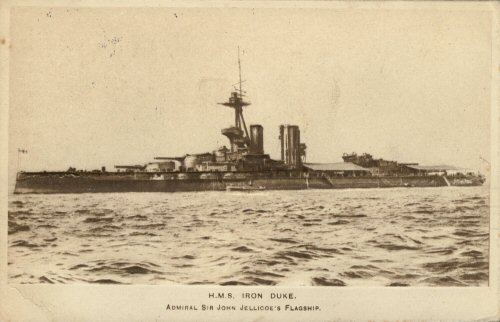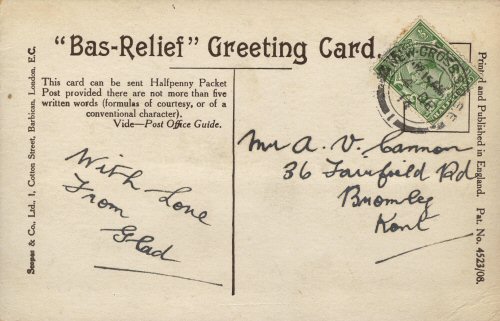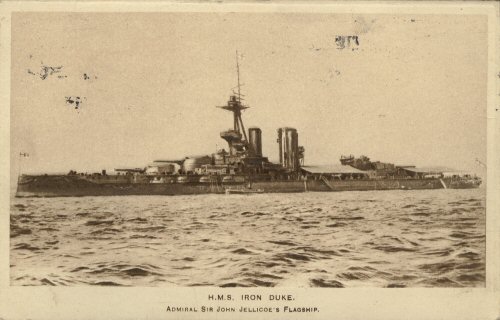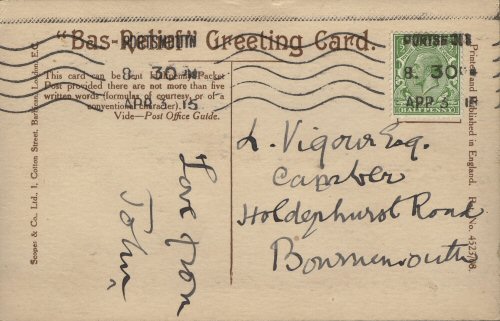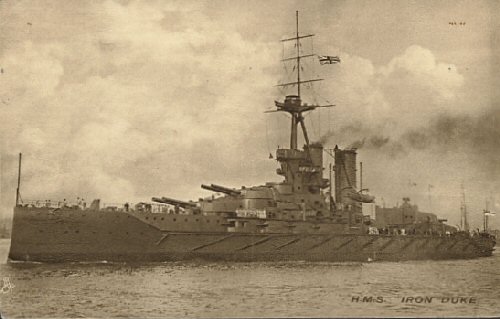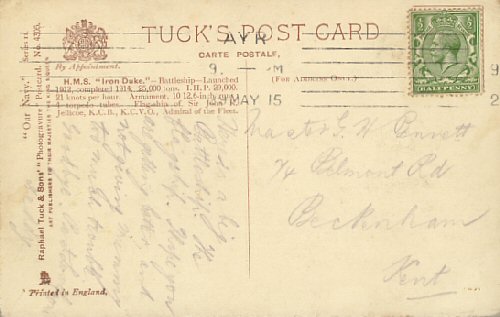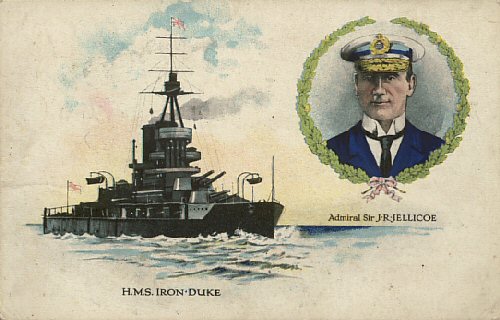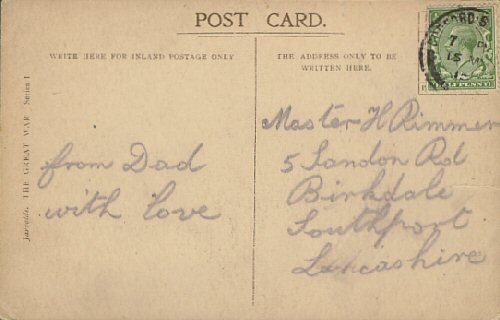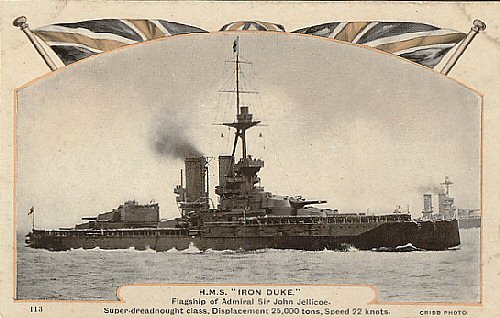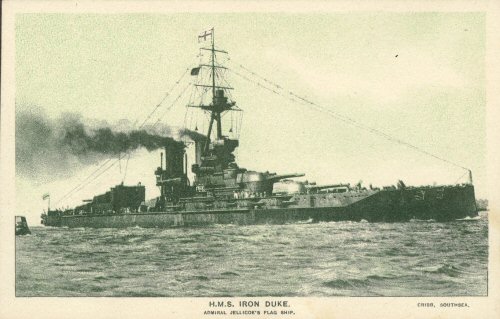
Sold for Scrap 1946
Iron Duke-class battleship (2f/2m). L/B/D: 622.8 × 90 × 29.5 (189.8m × 27.4m × 9m). Tons: 30,380 disp. Hull: steel. Comp.: 1,022. Arm.: 10 × 13.5 (5 × 2), 12 × 6, 2 × 3, 4 × 3pdr. Armor: 12 belt, 2.5 deck. Mach.: steam turbines, 29,000 shp, 20.7 kts. Built: Portsmouth Dockyard, Eng.; 1914.
The name ship of the first class of battleship built with antiaircraft guns, Iron Duke was commissioned just after the start of World War I and immediately became flagship of Admiral Sir John Jellicoe's Grand Fleet. She was named in honor of the Duke of Wellington, hero of the Napoleonic Wars. In the first years of the war, the Germans had launched a number of "tip and run" raids across the North Sea to bombard coastal cities such as Scarborough. On May 30, 1916, British intelligence learned that the German fleet was sailing from Wilhelmshaven, and that evening Iron Duke sailed from Scapa Flow at the head of a powerful force comprising twenty-four dreadnoughts, three battlecruisers, twelve light cruisers, eight armored cruisers, five flotilla leaders, forty-six destroyers, and a minelayer.
The plan was to rendezvous with Vice Admiral David Beatty's six battlecruisers, fourteen light cruisers, twenty-seven destroyers, a seaplane carrier, and four dreadnoughts to stop the anticipated German raid. In fact, the Germans hoped to lure the British into a line of submarines lying off the British naval bases, and then into the grasp of Admiral Reinhard Scheer's High Seas Fleet, comprising sixteen dreadnoughts, six pre-dreadnoughts, five light cruisers, and thirty-one destroyers. Beatty's German counterpart was Rear Admiral Franz von Hipper, in SMS Lützow with five battlecruisers, four light cruisers, and thirty destroyers and torpedo boats.
The Battle of Jutland began between light units of Beatty's and Hipper's respective fleets at about 1430 on May 31. By 1530, the two fleets were within sight of one another, and Hipper wheeled to the south in an effort to draw Beatty into range of the German High Seas Fleet about forty-six miles away. During the "run to the south," Beatty lost the battlecruisers HMS Indefatigable and Queen Mary, and his flagship Lion was heavily damaged. By 1700, the leading British ships were within range of the High Seas Fleet and turned for the north, drawing the Germans towards Jellicoe. At 1815, Beatty and Jellicoe joined forces and Jellicoe deployed his battleships so that they would "cross the T" of the German line of advance and bring the majority of their guns to bear. The Germans managed to sink first Rear Admiral Sir Robert Arbuthnot's armored cruiser Defence and shortly thereafter, Rear Admiral the Honourable Horace L. A. Hood's battlecruiser Invincible. Nonetheless, the Germans also came under withering fire from the British, and Hipper's Lützow had to be abandoned. At 1833, Scheer ordered his celebrated Gefechtskehrtwendung, a 180-degree "battle turn," while his ships were closely engaged by the enemy. Jellicoe ordered his fleet to pursue, though at less than top speed. Half an hour later, the German fleet turned back towards the British in what became known as the "death ride of the battlecruisers," during which Derfflinger and Seydlitz took the brunt of the fighting. At 2035, Scheer broke off the engagement for the last time, though skirmishes between destroyers and light cruisers continued through the night.
Jutland cost the British three battlecruisers, three cruisers, a flotilla leader, and seven destroyers. The Germans lost one battlecruiser, one pre-dreadnought, four light cruisers, and five torpedo boats. However, after Jutland the German High Seas Fleet never again attempted to engage the British battle fleet, and the battle proved to be the last between battleships fought without naval air power or submarines.
Transferred to the Second Battle Squadron in November 1916, Iron Duke was sent to the Mediterranean in 1919 and was briefly assigned to the Black Sea during the Russian Civil War. From 1926 to 1929, she was with the Atlantic Fleet, but under the terms of the London Naval Treaty of 1930, she was downgraded to a gunnery training ship. By the start of World War II, she was a depot ship at Scapa Flow. Although hit by German bombers on October 17, 1939, she remained in service until broken up in 1946.
